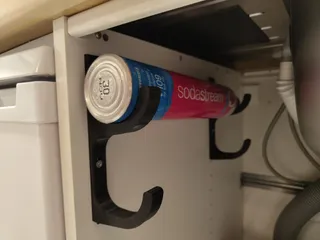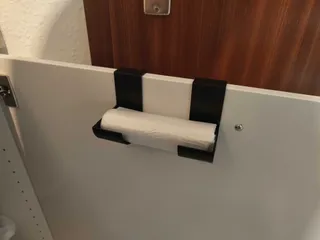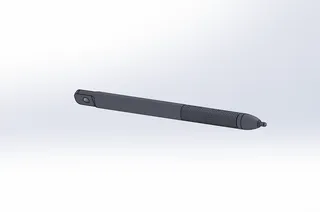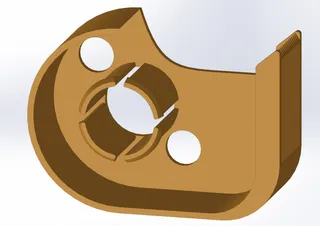Ikea Kallax Shelf-Divider-Delete Dowels
Description
PDFI recently got myself a new Lego model and wanted to display that on my trusty Ikea Kallax shelf that I've had for a couple of years. Unfortunately, the model was too big to fit inside the shelf and I also didn't have any more space left on top of the shelf. As I still wanted to display it on that shelf, I decided to take out one of the small dividers in the shelf and change the opening from a square box to a rectangular box double the size of one standard Ikea Kallax section. While removing this divider made enough space for the model it also made the divider one level below very wobbly as all sections of the Ikea Kallax shelf are connected. It didn't take long to remind myself that I own a 3D-Printer and so I decided to make some special dowels that can replace the Ikea stock dowels without needing all shelf dividers or looking too out of place. I, therefore, measured the hole's diameter as well as the necessary length of the dowel to connect all remaining dividers without sticking out.
After this solution worked very well for me I thought that there might be other people with similar problems out there, so I decided to upload my models. I added some more variations so that you can decide what model fits your use case. What's important, is that you need four dowels for each divider that you decide to remove from the Ikea Kallax shelf, therefor the g-codes already include four of each version.
First up are the dimensions of the dowels: The stock dowels of the Ikea Kallax shelf have an outer diameter of 6mm, so this diameter will work perfectly when you plan to install my custom dowels right from the beginning during the initial build of the shelf. As my shelf was already built with the standard dowels the 6mm custom dowels turned out to be a little loose so I also made a version with a 6.15mm diameter that works perfectly on used Kallax shelves like mine. The length on all dowels of the Kallax shelf is completely identical, so no matter where you want to install them, the length doesn't change.
The next thing is the flange of the dowels: To make the entire dowel as visually pleasing as possible I added flanges to the top of the dowels to fully conceal the hole in the shelf. For this flange, you can select two different options, depending on visual preferences. The first option is very low profile and is basically only a thin round plate with a chamfer on it. Being this thin makes it barely noticeable, but also nearly impossible to take out when you want to disassemble the shelf. I therefore also created a second option with a thicker flange and leverage slots that can be used to leverage the dowel out of the hole using a standard flat-head screwdriver. This makes the entire dowel more visible but allows for easier disassembly of the entire shelf.
To make the disassembly of the shelf even easier I also created a version for every previously described option that has a center punch-like hole in the top of the flange. This is supposed to help you center a drill bit perfectly on the dowel when you want to drill it out for faster disassembly. This is especially necessary if you decide to go with the low-profile flange version.
The dowels that are prepared as g-codes are all printed with 100% Infill which in this case is achieved by using 7 parameters for the print. This is supposed to give the dowels maximum strength, but you still have to make sure that you have good layer adhesion to create strong parts. I printed all of my dowels with 0.2mm layer height, but I'd recon that 0.3mm works fine as well.
Tags
Model origin
The author marked this model as their own original creation.




